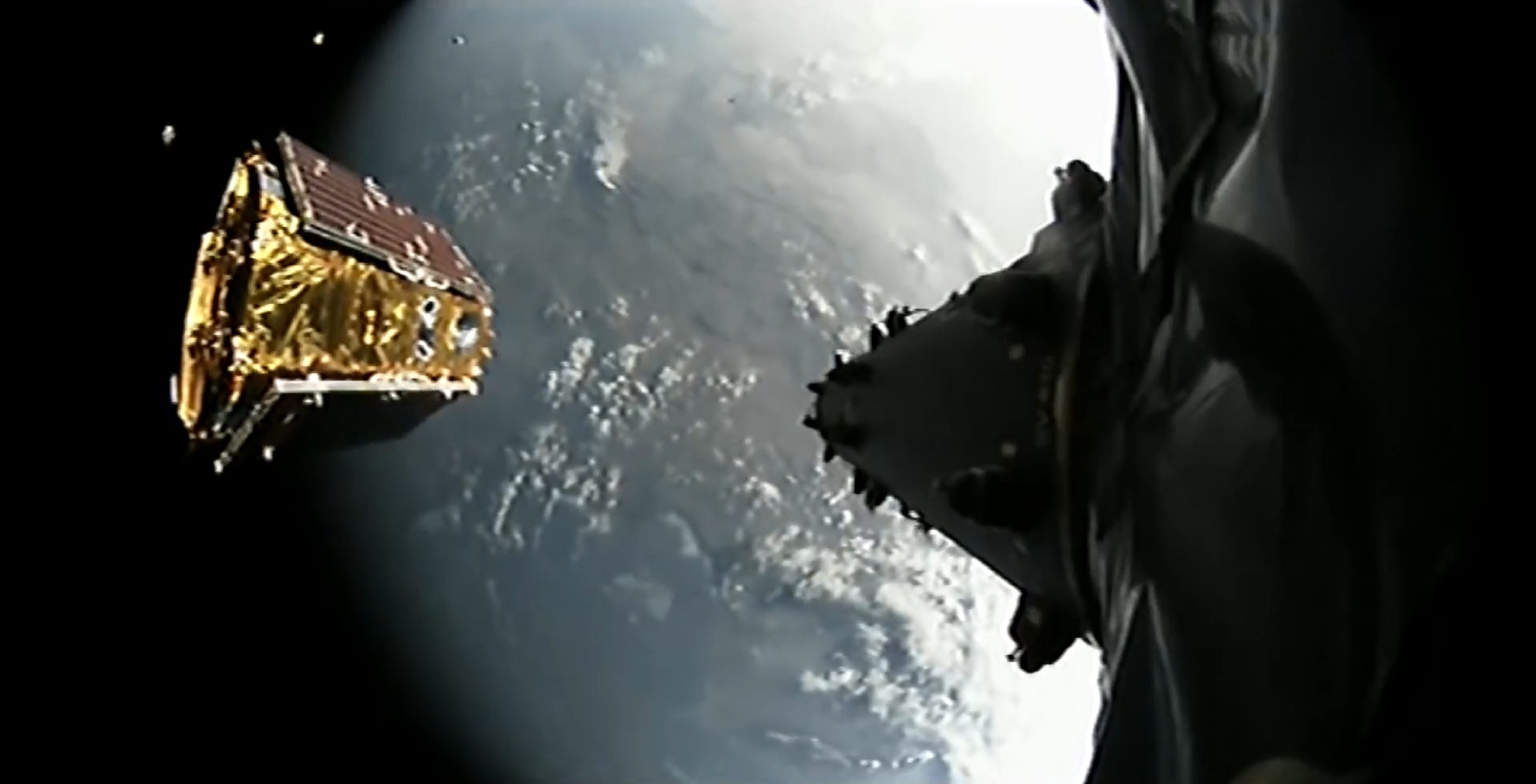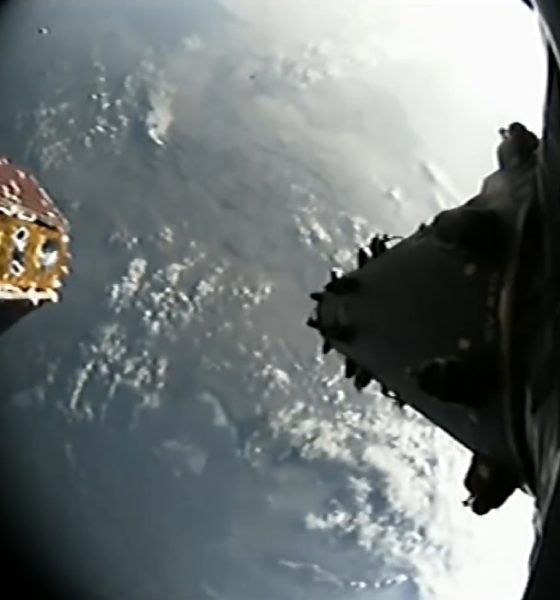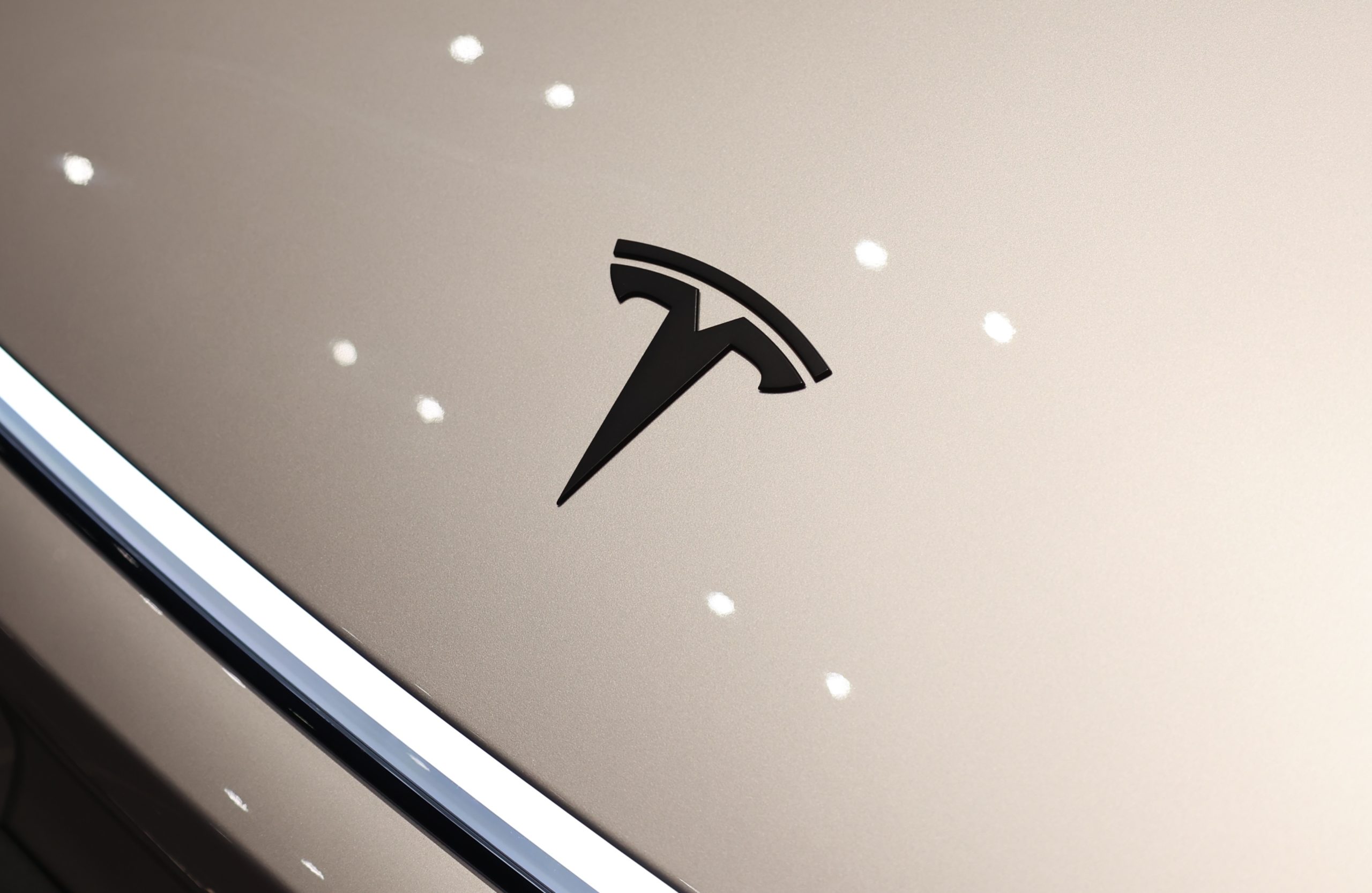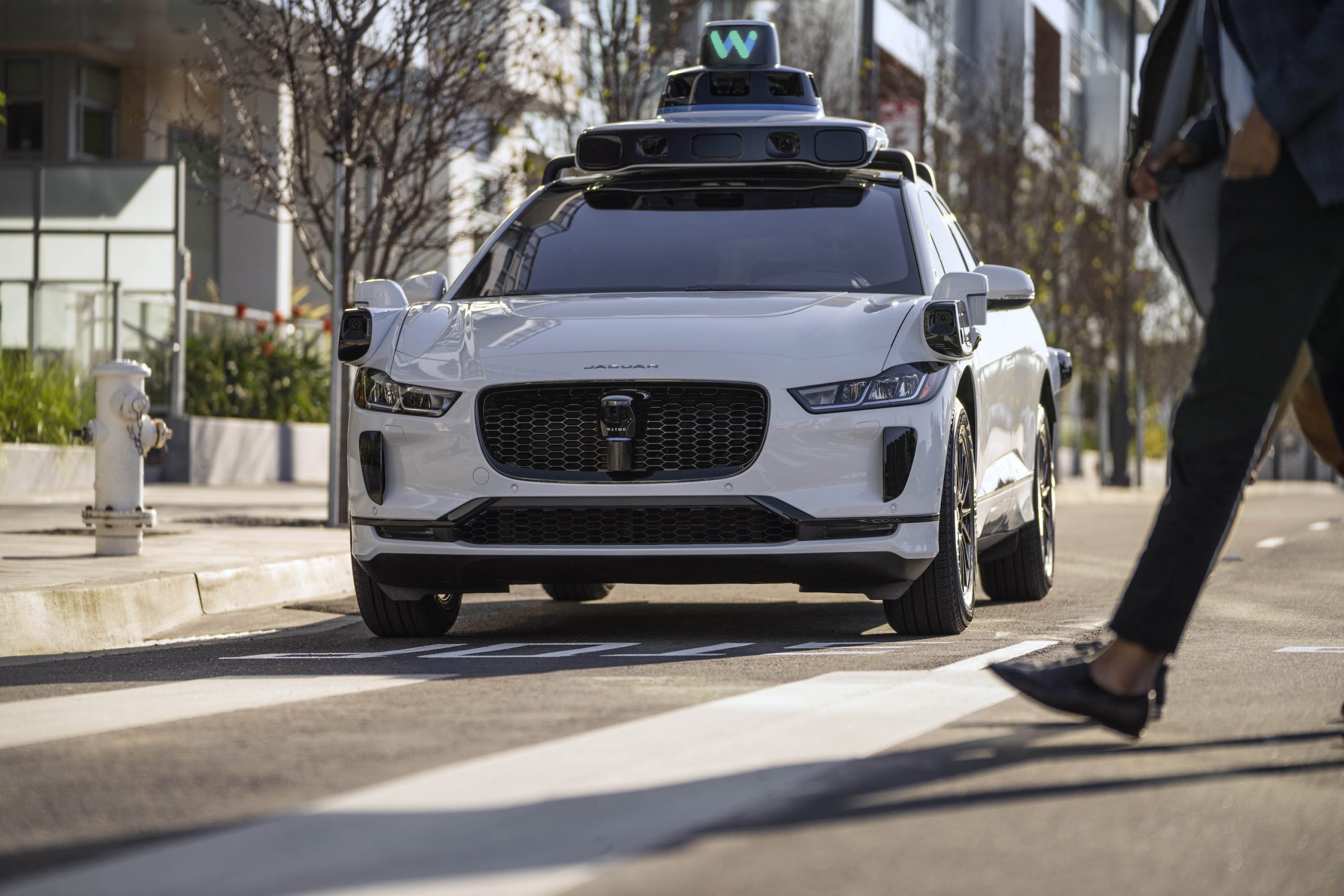

News
SpaceX has all the Starlink funding needed for an “operational constellation”
Upper-level wind shear has unfortunately scrubbed SpaceX’s first dedicated Starlink launch attempt, pushing Falcon 9 B1049’s third liftoff to no earlier than 10:30 pm EDT (02:30 UTC), May 16th.
A few hours prior to the launch attempt, SpaceX CEO Elon Musk hosted a conference call with members of the press and answered a number of questions about Starlink, providing the best look yet into the company’s newest endeavor. Topics included the advanced technologies on each Starlink satellite, their extremely unorthodox deployment method, SpaceX’s ultimate goals for the constellation, and even a few brief comments on funding.
Funding, secured
Perhaps the single most important thing Musk noted in the hour-long media briefing was his belief that SpaceX already has “sufficient capital to build an operational constellation.” It’s possible that that statement is heavily qualified, as Musk did not delve into greater detail, but it is still an incredible claim that could mean Starlink is far ahead of competing constellations and far more capital-efficient than OneWeb.
As previously discussed on Teslarati, in the last four years, OneWeb has raised $3.4B of funding, while SpaceX – a company primarily focused on building and launching rockets – has raised $2B, half of which is known to be dedicated to Starlink. OneWeb’s constellation (either 650 or 2650 satellites) cost estimate has grown quite a bit recently and stands at ~$5B. Assuming all $2B of the funding SpaceX has raised is dedicated to Starlink, that would translate to a per-satellite cost – including all infrastructure and launch – of $450,000 for the first phase (~4400 satellites).
Musk’s contextual definition of an “operational constellation” is probably more in line with the twelve 60-satellite launches he described as necessary to provide “significant [broadband] coverage”. It could also refer to the entire tranche of ~1600 Starlink satellites planned for the lower 550 km (340 mi) orbit this first batch of 60 is headed for, a number that Musk stated would offer “decent global coverage”. Either way, Starlink is almost certainly far more capital-efficient than OneWeb, LeoSat, Telesat, or any other satellite constellation with serious intentions.
The most obvious explanation for this – regardless of the satellites themselves – is simple: SpaceX owns its own closed-loop launch capability, including pads, integration facilities, an established cross-country transport network, and the rockets (Falcon) themselves. For any of the proposed satellite constellations to succeed, the manufacturers will almost invariably need to find build satellites so affordably that the cost of launch outweighs the cost of its payload. This ultimately means that launches alone could account for something like 50% of the cost of an entire satellite constellation.
Assuming Block 5 boosters can be reused at least 5-10 times each, the only real cost of an internal SpaceX launch is the hours worked, recovery fleet operations, and the expended upper stage and fairing – likely less than $30M altogether. As such, SpaceX may already be achieving its satellite cost targets on its first launch.
Deploying satellites “like spreading a deck of cards”
Meanwhile, Musk also offered some detail on the deeply unorthodox method SpaceX has chosen for spacecraft deployment once in orbit. Apparently, Starlink satellites will be deployed from Falcon 9’s upper stage by rotating the stage (presumably along its vertical axis) and simply letting go of the spacecraft. Musk used the analogy of spreading a deck of cards on a table, seemingly suggesting that they will either be released simultaneously (perhaps by stack) or with a stagger measured in milliseconds. This could create a fairly spectacular visual, forming an evenly-spaced spiral of satellites spreading out from the Falcon upper stage.
Above all else, Musk mainly seemed to be excited about Starlink, whether discussing the constellation’s long-term goals or the technology utilized on each individual satellite. Some miscellaneous facts and tidbits taken from the Q&A can be found below:
- Aside from Ka-band antennas and inter-satellite laser links, these 60 Starlink spacecraft are very close to the final spacecraft design.
- “It’s one of the hardest engineering projects that I’ve ever seen done.” – Elon Musk
- Starlink v0.9 is SpaceX’s heaviest payload ever by a huge margin, weighing in around 18,500 kg (40,800 lb). Crew Dragon is most likely in second-place, with a launch mass estimated to be around 13,500 kg.
- Combined, the solar arrays on the 60 Starlink spacecraft will produce up to 50% more power than the International Space Station’s football field-sized panels. This translates to ~180 kW, with each spacecraft thus producing around 3 kW total with an unusual single-panel array.
- Two solar array deployment mechanisms will be tested on this mission.
- “We see this as a way to generate revenue to develop more advanced rockets and spaceships. Starlink is a key component for establishing a presence on the moon and Mars.” – Elon Musk
- SpaceX sided with krypton-fueled Hall effect thrusters due to krypton costing 5-10x less than more traditional xenon propellant. SpaceX’s internally-designed and built thrusters will have an ISP of ~1500s.
- “[SpaceX has built] the most advanced phased array antenna[s] that I am aware of.” – Elon Musk
- These first 60 satellites alone will have a combined bandwidth of 1 terabit per second (125 GB/s), averaging around 17 Gbps per satellite.


Check out Teslarati’s Marketplace! We offer Tesla accessories, including for the Tesla Cybertruck and Tesla Model 3.

News
Tesla (TSLA) receives “Buy” rating and $551 PT from Canaccord Genuity
He also maintained a “Buy” rating for TSLA stock over the company’s improving long-term outlook, which is driven by autonomy and robotics.

Canaccord Genuity analyst George Gianarikas raised his Tesla (NASDAQ:TSLA) price target from $482 to $551. He also maintained a “Buy” rating for TSLA stock over the company’s improving long-term outlook, which is driven by autonomy and robotics.
The analyst’s updated note
Gianarikas lowered his 4Q25 delivery estimates but pointed to several positive factors in the Tesla story. He noted that EV adoption in emerging markets is gaining pace, and progress in FSD and the Robotaxi rollout in 2026 represent major upside drivers. Further progress in the Optimus program next year could also add more momentum for the electric vehicle maker.
“Overall, yes, 4Q25 delivery expectations are being revised lower. However, the reset in the US EV market is laying the groundwork for a more durable and attractive long-term demand environment.
“At the same time, EV penetration in emerging markets is accelerating, reinforcing Tesla’s potential multi‑year growth runway beyond the US. Global progress in FSD and the anticipated rollout of a larger robotaxi fleet in 2026 are increasingly important components of the Tesla equity story and could provide sentiment tailwinds,” the analyst wrote.
Tesla’s busy 2026
The upcoming year would be a busy one for Tesla, considering the company’s plans and targets. The autonomous two-seat Cybercab has been confirmed to start production sometime in Q2 2026, as per Elon Musk during the 2025 Annual Shareholder Meeting.
Apart from this, Tesla is also expected to unveil the next-generation Roadster on April 1, 2026. Tesla is also expected to start high-volume production of the Tesla Semi in Nevada next year.
Apart from vehicle launches, Tesla has expressed its intentions to significantly ramp the rollout of FSD to several regions worldwide, such as Europe. Plans are also underway to launch more Robotaxi networks in several more key areas across the United States.
News
Waymo sues Santa Monica over order to halt overnight charging sessions
In its complaint, Waymo argued that its self-driving cars’ operations do not constitute a public nuisance, and compliance with the city’s order would cause the company irreparable harm.

Waymo has filed a lawsuit against the City of Santa Monica in Los Angeles County Superior Court, seeking to block an order that requires the company to cease overnight charging at two facilities.
In its complaint, Waymo argued that its self-driving cars’ operations do not constitute a public nuisance, and compliance with the city’s order would cause the company irreparable harm.
Nuisance claims
As noted in a report from the Los Angeles Times, Waymo’s two charging sites at Euclid Street and Broadway have operated for about a year, supporting the company’s growing fleet with round-the-clock activity. Unfortunately, this has also resulted in residents in the area reportedly being unable to sleep due to incessant beeping from self-driving taxis that are moving in and out of the charging stations around the clock.
Frustrated residents have protested against the Waymos by blocking the vehicles’ paths, placing cones, and “stacking” cars to create backups. This has also resulted in multiple calls to the police.
Last month, the city issued an order to Waymo and its charging partner, Voltera, to cease overnight operations at the charging locations, stating that the self-driving vehicles’ activities at night were a public nuisance. A December 15 meeting yielded no agreement on mitigations like software rerouting. Waymo proposed changes, but the city reportedly insisted that nothing would satisfy the irate residents.
“We are disappointed that the City has chosen an adversarial path over a collaborative one. The City’s position has been to insist that no actions taken or proposed by Waymo would satisfy the complaining neighbors and therefore must be deemed insufficient,” a Waymo spokesperson stated.
Waymo pushes back
In its legal complaint, Waymo stated that its “activities at the Broadway Facilities do not constitute a public nuisance.” The company also noted that it “faces imminent and irreparable harm to its operations, employees, and customers” from the city’s order. The suit also stated that the city was fully aware that the Voltera charging sites would be operating around the clock to support Waymo’s self-driving taxis.
The company highlighted over one million trips in Santa Monica since launch, with more than 50,000 rides starting or ending there in November alone. Waymo also criticized the city for adopting a contentious strategy against businesses.
“The City of Santa Monica’s recent actions are inconsistent with its stated goal of attracting investment. At a time when the City faces a serious fiscal crisis, officials are choosing to obstruct properly permitted investment rather than fostering a ‘ready for business’ environment,” Waymo stated.
News
Tesla FSD v14.2.2 is getting rave reviews from drivers
So far, early testers have reported buttery-smooth drives with confident performance, even at night or on twisty roads.

Tesla Full Self-Driving (Supervised) v14.2.2 is receiving positive reviews from owners, with several drivers praising the build’s lack of hesitation during lane changes and its smoother decision-making, among others.
The update, which started rolling out on Monday, also adds features like dynamic arrival pin adjustment. So far, early testers have reported buttery-smooth drives with confident performance, even at night or on twisty roads.
Owners highlight major improvements
Longtime Tesla owner and FSD user @BLKMDL3 shared a detailed 10-hour impression of FSD v14.2.2, noting that the system exhibited “zero lane change hesitation” and “extremely refined” lane choices. He praised Mad Max mode’s performance, stellar parking in locations including ticket dispensers, and impressive canyon runs even in dark conditions.
Fellow FSD user Dan Burkland reported an hour of FSD v14.2.2’s nighttime driving with “zero hesitations” and “buttery smooth” confidence reminiscent of Robotaxi rides in areas such as Austin, Texas. Veteran FSD user Whole Mars Catalog also demonstrated voice navigation via Grok, while Tesla owner Devin Olsen completed a nearly two-hour drive with FSD v14.2.2 in heavy traffic and rain with strong performance.
Closer to unsupervised
FSD has been receiving rave reviews, even from Tesla’s competitors. Xpeng CEO He Xiaopeng, for one, offered fresh praise for FSD v14.2 after visiting Silicon Valley. Following extended test drives of Tesla vehicles running the latest FSD software, He stated that the system has made major strides, reinforcing his view that Tesla’s approach to autonomy is indeed the proper path towards autonomy.
According to He, Tesla’s FSD has evolved from a smooth Level 2 advanced driver assistance system into what he described as a “near-Level 4” experience in terms of capabilities. While acknowledging that areas of improvement are still present, the Xpeng CEO stated that FSD’s current iteration significantly surpasses last year’s capabilities. He also reiterated his belief that Tesla’s strategy of using the same autonomous software and hardware architecture across private vehicles and robotaxis is the right long-term approach, as it would allow users to bypass intermediate autonomy stages and move closer to Level 4 functionality.











